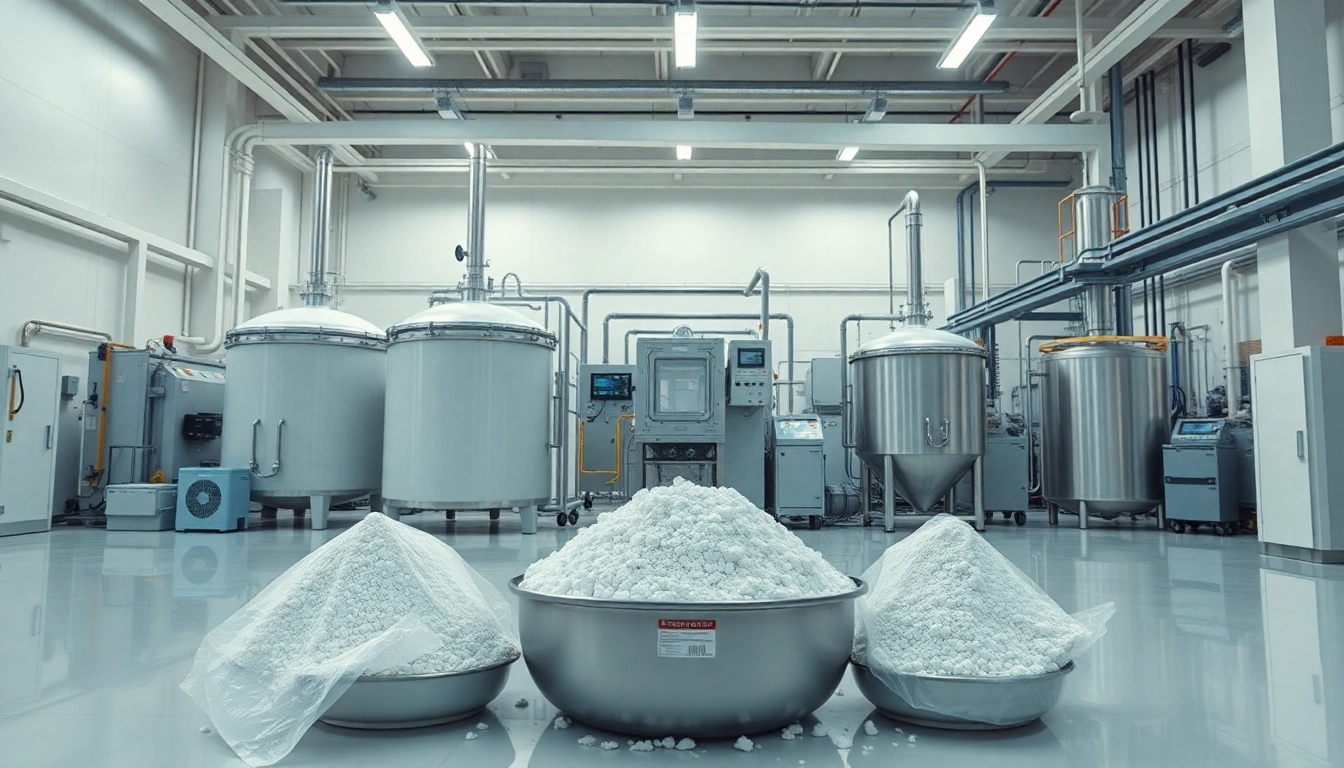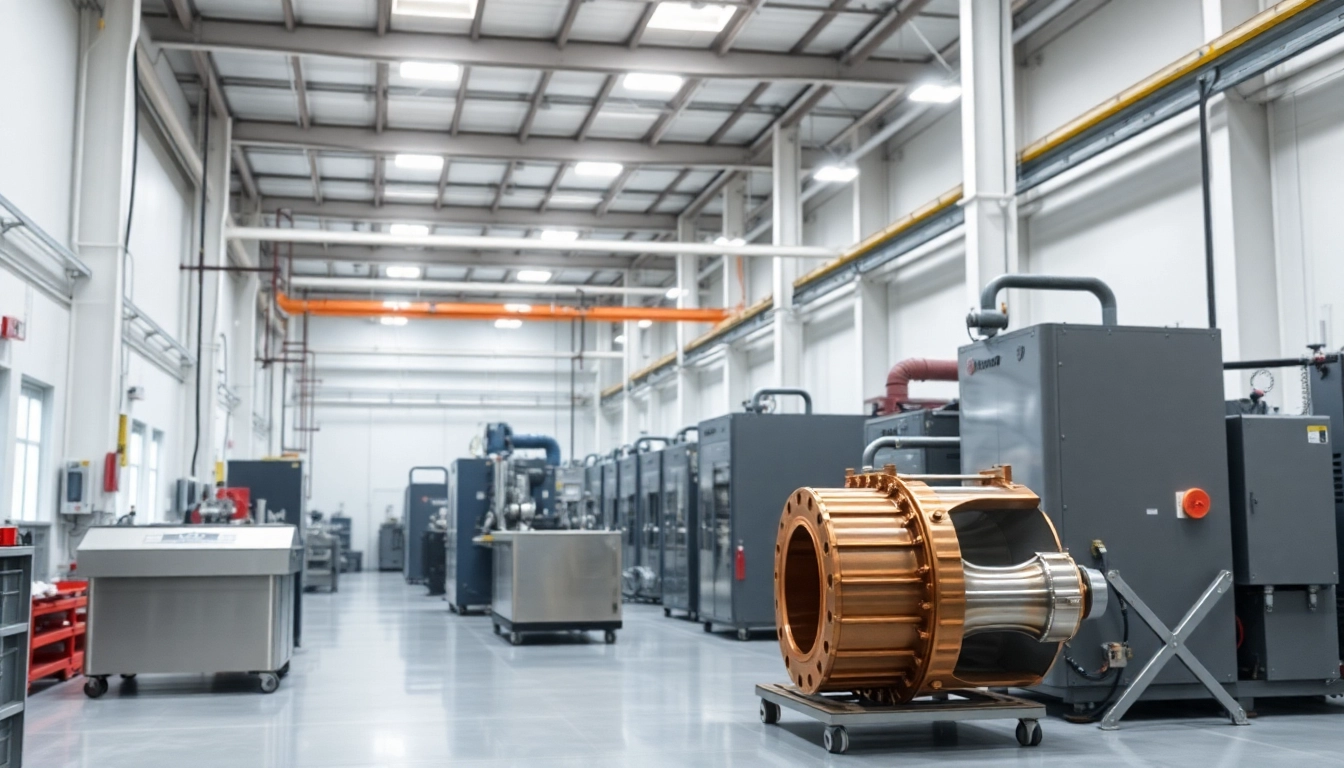Introduction to Cellulose Ether Manufacturing
Cellulose ether is a versatile compound derived from cellulose, a natural polymer found in the cell walls of many plants. As a crucial ingredient in numerous applications across various industries, understanding the fundamentals of cellulose ether manufacturing is essential for businesses seeking efficient solutions to their resource needs. Partnering with a Cellulose ether manufacturer can help organizations leverage the unique properties of this compound, enhancing product performance and sustainability.
What is Cellulose Ether?
Cellulose ether consists of cellulose molecules that have been chemically modified to include ether groups. This modification enhances the solubility and functional properties of cellulose, transforming it into a product that can be tailored for a wide range of uses. Cellulose ethers are typically water-soluble, allowing them to be easily integrated into various formulations. Common examples include methylcellulose, hydroxypropyl methylcellulose (HPMC), and carboxymethyl cellulose (CMC), each serving specific roles and exhibiting unique physical properties.
Importance of Cellulose Ether in Various Industries
Across numerous sectors such as construction, food processing, pharmaceuticals, and personal care, cellulose ether plays a pivotal role due to its functional properties. In the construction industry, for instance, cellulose ethers improve the workability and adhesion of cement-based products. In the food industry, they are utilized as thickeners and stabilizers, while in the pharmaceutical sector, cellulose ethers are commonly found in drug formulations to control release rates.
The versatility of cellulose ether enhances product performance, meets regulatory requirements, and contributes to overall sustainability in manufacturing processes.
Overview of Manufacturing Process
The manufacturing of cellulose ether primarily involves the following steps:
- Cellulose Extraction: The process begins with extracting cellulose from plant sources, often using alkali treatment to remove non-cellulosic materials.
- Etherification: The extracted cellulose is then subjected to etherification, where it undergoes a chemical reaction with an etherifying agent, such as an alkyl halide. This step alters the cellulose structure, introducing ether groups.
- Purification: After etherification, the product is purified to eliminate unreacted reagents and by-products, preparing it for further processing.
- Drying and Milling: The purified cellulose ether is then dried and milled into powder form, ready for packaging and distribution.
Types of Cellulose Ethers
Methylcellulose and Its Applications
Methylcellulose is one of the most common types of cellulose ether, known for its water solubility and gel-forming properties. It is widely utilized in the food industry as a thickener, emulsifier, and stabilizer. Beyond food, methylcellulose is also employed in construction as a binder in cementitious products, offering improved workability and adhesion properties.
In personal care products, methylcellulose serves as a film-forming agent, enhancing texture and stability in various formulations. Additionally, it is used as a laxative in pharmaceutical applications, demonstrating its versatility and importance across diverse sectors.
Hydroxypropyl Methylcellulose Variants
Hydroxypropyl methylcellulose (HPMC) is another critical cellulose ether variant, recognized for its thermostability and ability to form transparent films. HPMC is extensively used in the food industry for thickening sauces and dressings, while also playing a vital role in pharmaceutical formulations as a controlled-release agent.
Its distinctive physical properties make it suitable for use in products requiring specific viscosity and gel strength, including cosmetics and personal care items, where it aids in achieving desired textures.
Carboxymethyl Cellulose Overview
Carboxymethyl cellulose (CMC) is a cellulose ether that has carboxymethyl groups attached, resulting in excellent water solubility and thickening abilities. CMC is primarily used as a thickener, stabilizer, and emulsifying agent in the food industry, providing texture and consistency to various products, including ice creams and dressings.
In pharmaceuticals, CMC is used in tablet formulations and as a viscosity modifier in liquid systems. Its role in personal care products further emphasizes its versatility, being an essential ingredient in shampoos and conditioners for its thickening and film-forming properties.
Benefits of Working with a Cellulose Ether Manufacturer
Quality Assurance and Standards Compliance
One of the most significant advantages of collaborating with a reputable cellulose ether manufacturer is the assurance of high-quality products that comply with industry standards. Manufacturers often adhere to rigorous quality control processes, ensuring that their products meet specific regulatory and safety requirements. This commitment to quality can reduce risks for businesses, providing peace of mind that the materials used in their formulations are safe and reliable.
Customization and Flexibility in Production
Another key benefit is the ability to customize cellulose ether products to meet unique specifications or performance needs. A capable manufacturer can modify the production process to produce cellulose ethers with specific molecular weights, solubility levels, or functional properties suited for particular applications. This flexibility allows businesses to optimize their products and stand out in competitive markets.
Cost-effectiveness for Businesses
Working with a dedicated cellulose ether manufacturer can also streamline production processes, leading to overall cost savings. By utilizing specialized suppliers, businesses can benefit from economies of scale and reduced raw material costs, ultimately enhancing their profitability. Additionally, effective supply chain management can ensure timely delivery and consistent availability of cellulose ether, reducing downtime in production.
Key Considerations When Selecting a Cellulose Ether Manufacturer
Evaluating Manufacturer Credentials and Experience
When selecting a cellulose ether manufacturer, assessing their credentials and experience is paramount. Manufacturers with a proven track record in the industry are more likely to produce reliable, high-quality products. Look for certifications, such as ISO 9001, which indicate a commitment to quality management systems.
Additionally, consider the manufacturer’s history and experience with various cellulose ether types, as this can influence their capacity to meet your specific requirements effectively.
Importance of Technical Support and Service
Technical support and after-sales service play an essential role in maintaining a successful partnership with a cellulose ether manufacturer. A manufacturer that offers robust technical assistance can help you navigate challenges and optimize your use of cellulose ether in your products. Technical support may include formulation advice, troubleshooting assistance, and guidance on best practices for incorporation into existing systems.
Assessing Production Capacity and Capabilities
Another critical aspect to consider is a manufacturer’s production capacity and capabilities. Understanding whether the manufacturer can meet your projected demands, both in volume and product variations, is vital for ensuring seamless operations. Availability of advanced manufacturing technologies and processes can also contribute significantly to the quality and consistency of the products delivered.
Future Trends in Cellulose Ether Manufacturing
Innovation and Technological Advances
The cellulose ether manufacturing industry is poised for significant innovation and advancements as research continues to identify new applications and enhance production processes. Emerging technologies, including biotechnology and novel chemical processes, are expected to improve the efficiency and sustainability of cellulose ether production. Additionally, manufacturers are exploring green chemistry practices to reduce environmental impact, leading to more eco-friendly products.
Sustainability in Production Practices
Sustainability is becoming a priority for consumers and businesses alike, driving demand for environmentally friendly products and manufacturing processes. Cellulose ether manufacturers are increasingly adopting sustainable practices, such as using renewable raw materials and reducing energy consumption during production. By aligning with eco-conscious values, manufacturers can appeal to a broader range of customers while contributing to global sustainability goals.
Market Demand and Growth Prospects
The market for cellulose ether is expected to grow as demand increases for innovative solutions across various applications. Factors driving this growth include the rise of eco-friendly products, the expanding construction sector, and the increasing use of cellulose ethers in pharmaceuticals and food production. Manufacturers who can adapt to market trends and develop unique formulations will be well-positioned to thrive in this evolving landscape.



